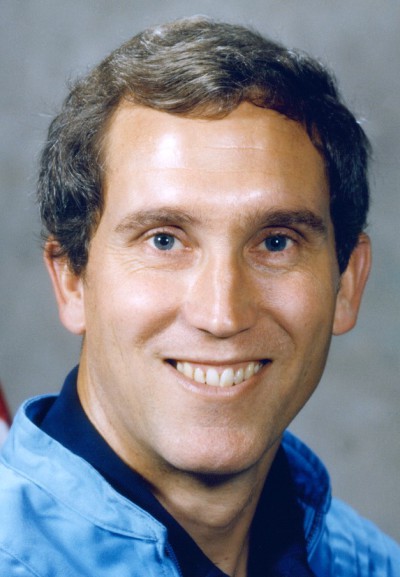Michael Smith (Michael John Smith)

Michael Smith was born April 30, 1945, in Beaufort, North Carolina. He graduated from Beaufort High School in 1963, and went on to receive a Bachelor of Science degree in Naval Science from the United States Naval Academy in 1967. He subsequently attended the U.S. Naval Postgraduate School at Monterey, California, from which he graduated with a Master of Science degree in Aeronautical Engineering in 1968. He completed naval aviation jet training at Naval Air Station Kingsville, Texas, receiving his aviator wings in May 1969. He was then assigned to the Advanced Jet Training Command (VT-21) where he served as an instructor from May 1969 to March 1971. During the 2-year period that followed, he flew A-6 Intruders and completed a tour during the Vietnam War while assigned to Attack Squadron 52 (VA-52) aboard the aircraft carrier USS Kitty Hawk. In 1974, he graduated from U.S. Naval Test Pilot School and was assigned to the Strike Aircraft Test Directorate at NAS Patuxent River, Maryland, to work on the A-6E TRAM and Cruise missile guidance systems. He returned to the U.S. Naval Test Pilot School in 1976 and completed an 18-month tour as an instructor. From Patuxent River, he was assigned to Attack Squadron 75 (VA-75), where he served as maintenance and operations officer while completing two Mediterranean deployments aboard the carrier USS Saratoga. He flew 28 different types of civilian and military aircraft, logging 4,867 hours of flying time. He was promoted posthumously by Congress to the rank of Captain, and has had a Chair named in his honor at the U.S. Naval Postgraduate School.
Michael Smith was selected for the astronaut program in May 1980; he served as a commander in the Shuttle Avionics Integration Laboratory (SAIL), Deputy Chief of Aircraft Operations Division, Technical Assistant to the Director, Flight Operations Directorate, and was also assigned to the Astronaut Office Development and Test Group. In addition to being pilot on the Challenger, he had been slated to pilot a future Shuttle mission (STS-61-N) which had been scheduled for the Fall of 1986. Michael Smith’s voice was the last one heard on the Challenger voice recorder, saying “Uh oh”. It broke up 73 seconds into the flight, and at an altitude of 48,000 feet (14.6 km). While analyzing the wreckage, investigators discovered that several electrical system switches on Smith’s right-hand panel had been moved from their usual launch positions. Fellow Astronaut Richard Mullane wrote, “These switches were protected with lever locks that required them to be pulled outward against a spring force before they could be moved to a new position.” Later tests established that neither the force of the explosion, nor the impact with the ocean could have moved them indicating that he made the switch changes, presumably in a futile attempt to restore electrical power to the cockpit after the crew cabin detached from the rest of the orbiter.
Born
- April, 30, 1945
- USA
- Beaufort, North Carolina
Died
- January, 28, 1986
- USA
- Cape Canaveral, Florida
Cause of Death
- Challenger explosion
Cemetery
- International Forest of Friendship Memorial
- Atchison, Kansas
- USA



